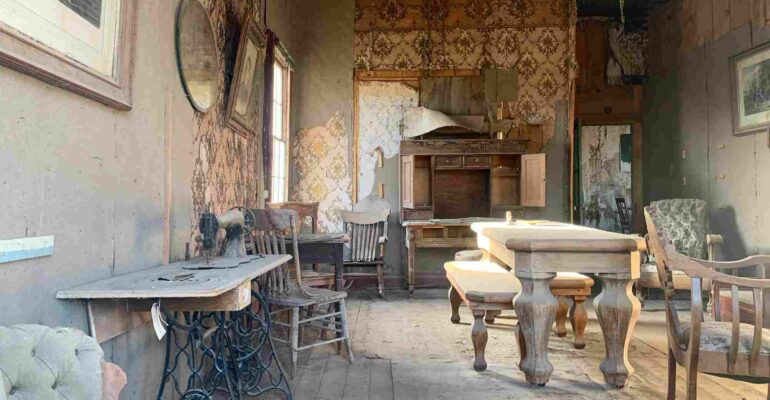“Explore Timeless Elegance: 1900s Interior”
January 6, 2025 2025-01-06 16:05“Explore Timeless Elegance: 1900s Interior”
Interior design is more than just selecting furniture and colors, it’s about creating spaces that reflect culture, history, and human experiences. The 1900s were a transformative period for interior design, with several iconic movements emerging that shaped the way we live and design spaces today. From the handcrafted simplicity of the Arts and Crafts movement to the sleek sophistication of Mid-Century Modernism, this century laid the foundation for modern design.
At Dhruva College of Fashion Technology, students dive deep into these influential periods, exploring how they shaped design and learning how to incorporate these styles into their work. In this blog, we will explore the evolution of 1900s interior design and discuss how Dhruva College prepares students to innovate within this rich historical context.
The Early 1900s: The Arts and Crafts Movement
At the turn of the 20th century, the Arts and Crafts movement emerged as a response to the rise of industrialization and mass production. Designers rejected ornate, machine-made items and instead embraced handcrafted, high-quality materials. This movement emphasized simplicity, craftsmanship, and the natural beauty of materials.
The Arts and Crafts style influenced not only furniture but also textiles, wallpaper, ceramics, and architecture. Designers used natural materials like wood, stone, and metal, and focused on techniques like hand-weaving and hand-carving.
At Dhruva College of Fashion Technology, students study this era’s focus on quality craftsmanship and authenticity. The appreciation for the beauty of materials and the artistry of handmade work continues to inspire Dhruva College students to this day.
Key Features of the Arts and Crafts Movement:
- Handcrafted Furniture: Furniture pieces made from solid wood with intricate details, showcasing exceptional craftsmanship.
- Natural Materials: Wood, stone, and metal, often left in their natural state to highlight imperfections.
- Simplicity and Functionality: Designs that prioritize functionality while maintaining a simple, elegant aesthetic.
The 1920s: The Glamour of Art Deco
The 1920s ushered in a new era of luxury and sophistication, marked by the Art Deco style. After World War I, society yearned for glamour and elegance, and Art Deco became a symbol of the optimism of the Jazz Age. This style fused bold geometric shapes with luxurious materials, reflecting the spirit of progress and modernity.
Art Deco interiors were designed to be striking and opulent. Designers incorporated geometric patterns, shiny finishes, and rich materials like chrome, glass, lacquer, and marble. Bold colors, including gold, silver, and deep jewel tones, dominated the palette.
At Dhruva College of Fashion Technology, students study Art Deco as part of their exploration of modern history. The style’s influence is clear in many contemporary designs, where bold patterns and rich textures continue to play a central role.

Key Features of Art Deco Style:
- Geometric Patterns: Bold lines and shapes, often symmetrical, found in furniture, flooring, and decorative accents.
- Luxurious Materials: Rich materials like marble, glass, and chrome, often with highly polished finishes.
- Vibrant Color Palettes: The use of colors such as gold, silver, black, and deep hues, paired with contrasting elements.
The 1930s: Modernism and the Pursuit of Functionality
In the 1930s, the focus of interior design shifted towards Modernism, which emphasized clean lines, functional design, and minimalism. The economic challenges of the Great Depression and the global instability of the era led designers to prioritize practicality over ornamentation. Modernism was about stripping away unnecessary decoration and focusing on simple, functional, and efficient designs.
This period saw the use of industrial materials like steel, concrete, and glass. Furniture and interiors became streamlined, reflecting a desire for simplicity and efficiency.
At Dhruva College of Fashion Technology, students explore the principles of Modernism and learn how to apply them in contemporary settings. Modernism’s emphasis on clean lines, simplicity, and functionality continues to inspire Dhruva College students to create designs that blend form with practicality.
Key Features of Modernism:
- Streamlined, Simple Forms: Furniture and decor with clean lines, avoiding elaborate ornamentation.
- Industrial Materials: Steel, glass, and concrete became common materials, reflecting the era’s technological advancements.
- Neutral Color Schemes: Interiors often featured muted tones, with color accents used sparingly for impact.
The 1940s-1950s: Mid-Century Modernism and Post-War Innovation
The Mid-Century Modern style, which took off after World War II, marked a shift towards optimism and innovation. This period was characterized by a focus on functional design, simplicity, and innovative materials. Mid-Century Modern furniture often featured sleek, organic shapes and was designed to be practical, yet aesthetically pleasing.
The use of new materials such as molded plywood, fiberglass, and plastic transformed furniture design. The style also emphasized open-plan layouts and large windows, which connected interiors with the outdoors and allowed for more natural light.
Students at Dhruva College of Fashion Technology engage with Mid-Century Modernism to understand how innovation in materials and design can lead to more functional and beautiful spaces.

Key Features of Mid-Century Modern Style:
- Organic Shapes and Clean Lines: Furniture with flowing, natural lines and simple, functional forms.
- Innovative Materials: Use of molded plywood, fiberglass, and plastics in furniture design.
- Indoor-Outdoor Flow: Open spaces with large windows and a seamless connection to outdoor areas.
How Dhruva College of Fashion Technology Shapes Future Designers
At Dhruva College of Fashion Technology, students don’t just study the history of interior design, they learn how to shape the future of design. The college’s curriculum includes in-depth study of iconic movements from the 1900s, allowing students to see how design reflects culture, history, and innovation. By examining these historical movements, students gain a deeper understanding of how design has evolved and how they can incorporate these principles into modern settings.
Dhruva College encourages students to experiment with both traditional and contemporary techniques. By learning about the past and exploring current trends, students are empowered to create innovative spaces that blend functionality with aesthetic beauty. The skills they acquire enable them to tackle modern design challenges while respecting the rich history of interior design.
Conclusion:
The interior design trends of the 1900s laid the foundation for much of what we see in modern design today. The handcrafted elegance of Arts and Crafts, the bold glamour of Art Deco, the simplicity of Modernism, and the innovation of Mid-Century Modernism all continue to inspire designers around the world.
At Dhruva College of Fashion Technology, students are equipped to understand these movements and incorporate them into their work. They gain the tools needed to create spaces that are not only functional but also aesthetically timeless. By blending the best of the past with cutting-edge techniques and materials, Dhruva College students are ready to innovate and create designs that will shape the future of interior.
The 1900s were a time of immense change in the design world, and Dhruva College ensures that the students who pass through its doors are prepared to carry that legacy forward, creating spaces that resonate with beauty, functionality, and timeless appeal.







